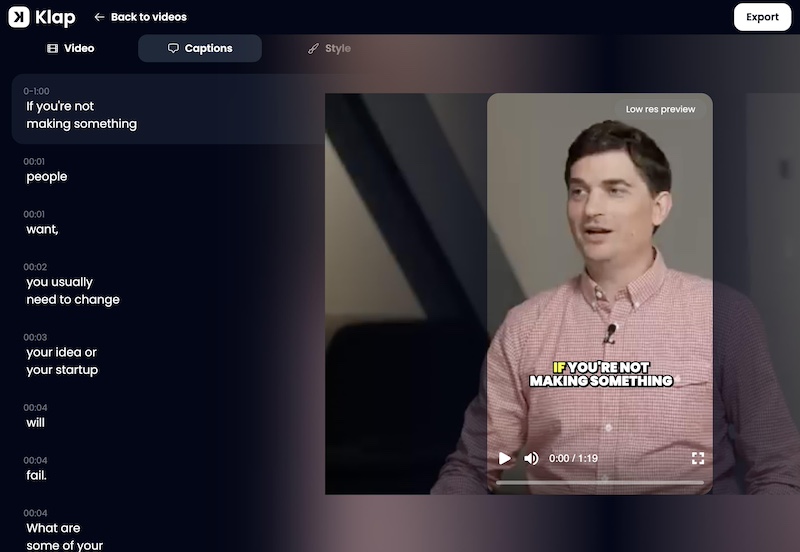In today’s digital era, creativity knows no bounds. With the help of artificial intelligence (AI), even video editing has become more accessible and efficient.
Professional videographers, amateur filmmakers, and content creators alike are now utilizing AI-assisted video editing tools to enhance their projects.
In this article, we will explore various tips and tricks to unleash your creativity using AI in video editing.
Understanding AI-Assisted Video Editing
AI-assisted video editing is the integration of artificial intelligence algorithms into traditional video editing software.
With their advanced capabilities, the best AI video editor tools can analyze the content of videos, detect objects or people within frames, transcribe dialogue accurately, suggest edits, apply visual effects effortlessly, and much more.
Tips for Efficient AI-Assisted Video Editing
- Automated Transcriptions for Accurate Subtitles: By utilizing AI algorithms trained in speech recognition technology, video editors can efficiently generate accurate transcriptions of dialogue. These transcriptions help in creating precise subtitles that enhance accessibility for viewers with hearing impairments and non-native language speakers.
- Effective Point Tracking for Object Emphasis: In certain videos where clarity is crucial – such as tutorials or action sequences – tracking objects can greatly simplify the story’s narrative. AI-powered tracking systems allow editors to lock focus on a specific object or person throughout an entire sequence automatically.
- Intelligent Facial Recognition for Impressive Effects: Adding visual effects to specific faces within a frame is made easier with facial recognition algorithms offered by AI tools. Whether it’s applying beautification filters or inserting humorous overlays like glasses or hats, these features add a new level of creativity and amusement to your videos.
- Seamless Editing with Content-Aware Tools: Content-aware tools utilize machine learning algorithms that analyze the content of a video frame by frame. These tools make it remarkably easy to remove unwanted objects or fill gaps generated during editing sessions without noticeable artifacts.
- Real-Time Color Correction Assistance: Correcting color imbalances in video footage can be a challenging task. However, AI-powered tools simplify this process significantly. By using advanced machine learning algorithms, these tools analyze and enhance the colors throughout your video or adjust them to convey a specific mood.
Tricks for Enhanced Creativity in AI-Assisted Video Editing
- Experiment with Filters and Styles: AI-powered video editing tools often offer a wide range of filters and visual styles that can dramatically change the look and feel of your footage. Explore different options to create unique visual presentations that match your desired aesthetic.
- Utilize AI-Suggested Cuts: Many AI-assisted video editing platforms offer suggestions for cuts based on analyzing audio cues or motion patterns. These intelligently generated suggestions can spark new creative ideas and save you valuable time during the editing process.
- Enhance Collaboration with AI Tools: Collaborative projects often require different people to edit various segments of a video simultaneously. Integrated AI-assisted tools make it easier for multiple editors to work together by providing recommendations, suggesting transitions, or automating some individually time-consuming tasks.
- Polish Your Visual Effects with Motion Tracking: Modern video editing software equipped with motion tracking capabilities enables users to apply effects that stay linked to specific objects as they move within a frame. By utilizing this feature strategically, you can create stunning visuals that captivate your audience.
Tricks for Enhanced Audio Editing with AI
- Noise Reduction for Crystal Clear Sound: AI-powered audio editing tools can automatically identify and eliminate background noise or unwanted sounds, resulting in cleaner, professional-sounding audio. This feature is especially beneficial when dealing with interviews, podcasts, or any audio recording that requires pristine sound quality.
- Automatic Audio Syncing: AI-assisted video editing tools can easily synchronize separate audio files with video footage automatically. This saves significant time and effort by eliminating the need to manually align tracks, ensuring seamless integration between visual and auditory elements.
Tips for Optimizing AI-Assisted Video Editing Workflows
- Organize Your Media Assets Efficiently: Before diving into the editing process, it is essential to organize your media assets properly. Use appropriate file naming conventions or metadata tagging to enable efficient search and retrieval of files when needed. A well-structured library will significantly streamline your workflow, saving you valuable time during the editing process.
- Train the Algorithm to Improve Suggestions: Most AI-assisted video editing tools provide feedback mechanisms where users can rate suggested edits made by the algorithms. By consistently providing input on the recommended changes, over time, the algorithm will learn and adapt to your preferences better, enhancing its ability to make relevant suggestions aligned with your creative vision.
Conclusion
AI-assisted video editing has opened up new realms of creativity where more precise edits, automated processes, intelligent recommendations, and smooth workflows empower the editor’s imagination like never before.
By embracing these tips and tricks for efficient usage of AI technology, videographers can elevate their storytelling abilities while saving precious time during post-production.
Embrace the powerful potential of AI in video editing, enhance your content quality, and deliver awe-inspiring videos that resonate with your target audience!
You might also like…
[ad_2]
Source link



